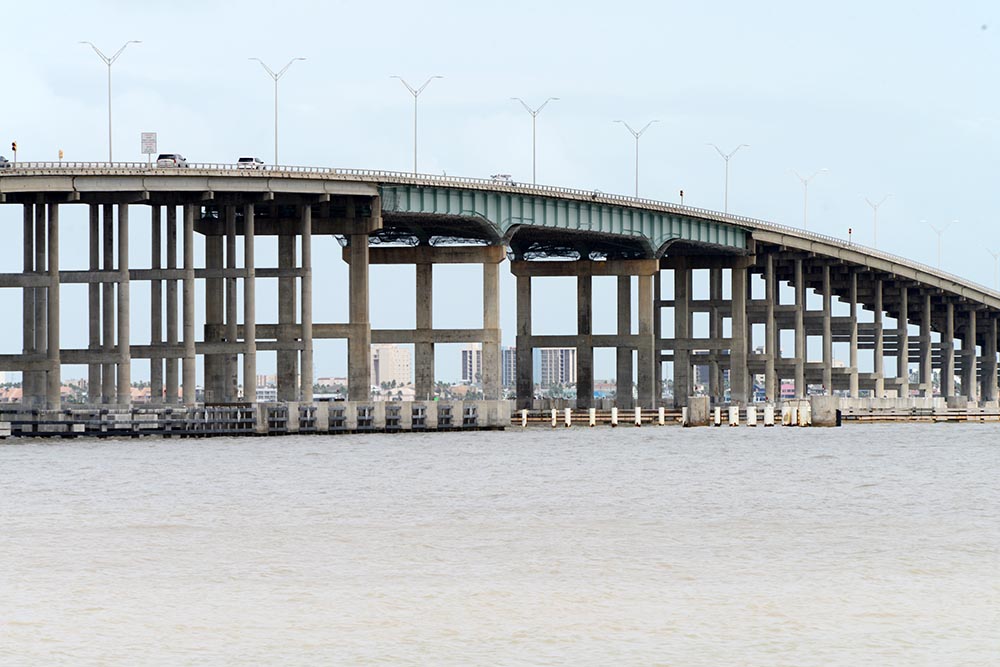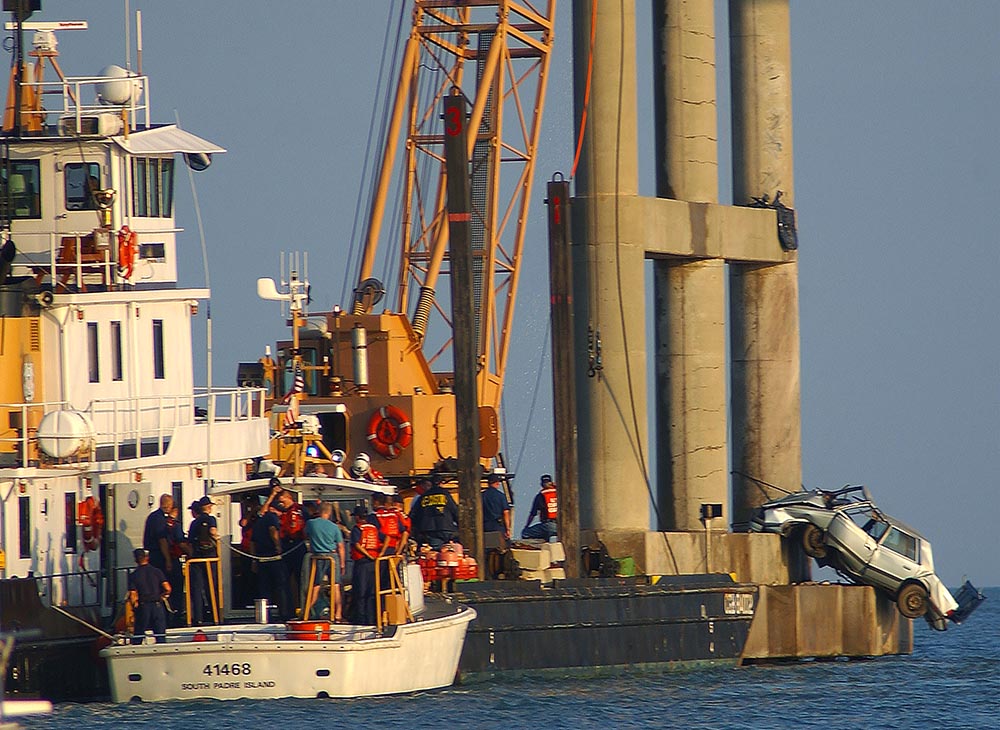The Queen Isabella Causeway, as it was known then, suffered catastrophic damage when an out-of-control towboat and barge slammed into it 20 years ago on Sept. 15, 2001.
Occurring just four days after the 9/11 attacks, news of the tragedy that transpired in the Laguna Madre between Port Isabel and South Padre Island was overwhelmed nationally by media coverage of the terrorist attacks.
But here in the Valley, nobody forgets.
“It hit the columns directly, and that caused instability in the structure. And once the columns were impacted there was collapse immediately for one of the spans, and then the pressures and the stresses on the remaining structure were such that several hours later the second span came down,” said Pedro Alvarez, chief engineer for TxDOT’s Pharr district.
“It was the direct impact from the barge to the column that caused the structural damage and ultimately the collapse,” he added.
Many may wonder if the state’s second-longest bridge, renamed the Queen Isabella Memorial Causeway, remains as vulnerable now as it was then.
The tragedy spurred officials into action, and TxDOT, which is tasked with maintaining the structure, moved aggressively to minimize the risk of any re-occurrence of the circumstances which led to the loss of eight souls.
Here’s what they did.

Day of the dolphin
One of the critical safety improvements made in the channel approach of passing towboats with barges is the installation of devices called “dolphins.”
The marine mammal dolphin is common to the Laguna Madre and the South Padre Island area, but these are an entirely different, man-made species.
Dolphins are constructed of wood or concrete and their purpose is to deflect off-course shipping away from critical bridge infrastructure and, hopefully, back onto the correct path.
The approach along the Gulf Intracoastal Waterway and under the Queen Isabella Memorial Causeway can be tricky to navigate. Shallow waters, high winds and unpredictable tidal forces can conspire to make it hard to keep a tow of barges on course.
The approach hasn’t changed, but the dolphins are now on sentinel duty.
“The full water causeway, intracoastal is another name it’s referred to as, is still in the same location,” Alvarez said. “What has been done is we have come in and, aside from the detection system, we have installed what are called dolphins.”
“And these dolphins are basically piers that are in the water that would absorb an impact,” he added. “In lieu of the barge hitting the columns directly, it would hit the concrete structure, and redirect the barge so that it would avoid and not hit the columns themselves.”
Rules of the sea
Alvarez said as long as towboat and other captains operate safely, within the parameters laid out for transiting the bay, there shouldn’t be problems.
“The expectation is that the barge operators are fully aware of where the intercoastal waterway is at, and they operate within those parameters,” Alvarez said. “Obviously, the bay itself is shallow, except where they have actually dug out and allowed for these barges and ships to go through, right?”
“The expectation is like a prudent driver on the highway,” he added. “You follow the speed limit, you stay in your lane, you do what you’re supposed to be doing. It’s unfortunate that this happened 20 years ago where, for whatever reason, the barge operator went off course and caused the incident.”

High-tech monitoring
Yet TxDOT officials aren’t leaving it all to the skills or attention spans of sea-going captains traversing the bay.
In 2004, TxDOT designed and installed a Collapse Warning System for the causeway which continues to be monitored by the agency’s Pharr district office. It was upgraded in 2007.
The system consists of a fiber optic cable that transmits warnings when broken, a controller monitoring that signal, and traffic gates and warning signs for motorists and an emergency phone link to TxDOT offices.
“This system was put in in order to basically provide a visual,” Alvarez said. “If there were to be an unfortunate collapse of any of the (bridge) segments, the fiber optic cables that are run continuously across the Queen Isabella would be broken and that in turn would set off a set of steps where the signals would be broken, the flashers would come on to forewarn motorists that there’s an issue, and at the ends of the bridge the traffic gates would come down and basically stop traffic from entering the causeway.”
“And last but not least, we would get a phone message advising us at TxDOT that there’s something happening on the causeway so we can go do a complete inspection with the help of the Coast Guard,” he added.
Queen Isabella Memorial Causeway facts
Structure: Concrete pier-and-beam bridge, with a steel cantilever beam main span
Opened: 1974
Cost: $12 million
Length: 2.4 miles, the second-longest bridge in the state after the 2.6-mile Fred Hartman Bridge between Baytown and La Porte
Deck width: 63.3 feet




